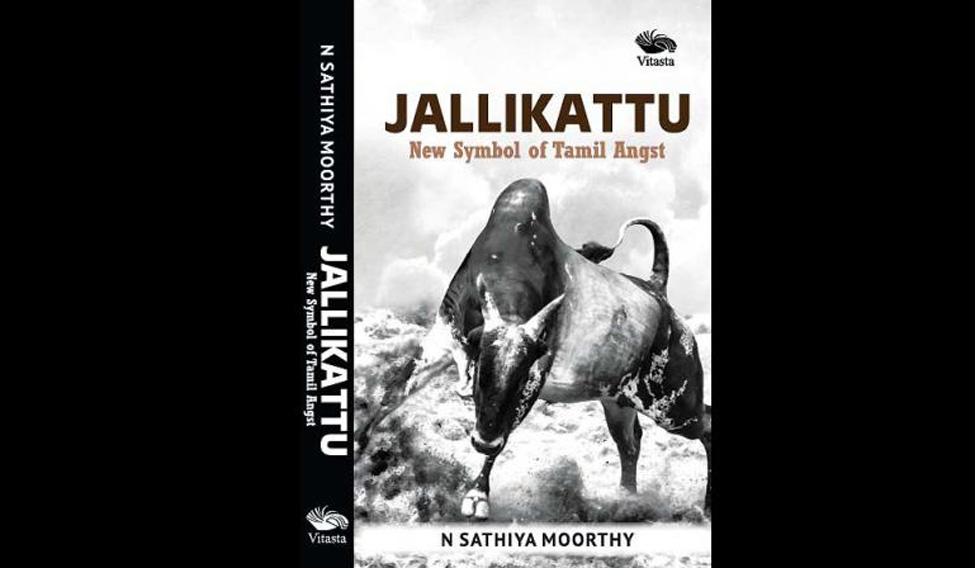In mid January 2017, pro-Jallikattu protests on the Marina beach in Chennai became a public frenzy. A protest to restore the traditional bull taming sport, banned for several years by the Supreme Court; a protest that wasn’t organised by any identifiable leader. N. Sathiya Moorthy’s book Jallikattu: New Symbol of Tamil Angst delves deep into Tamil tradition and the history of Jallikattu in the backdrop.
In the book published by Vitasta Publishing, Sathiya Moorthy begins with the ‘Restore Jallikattu’ protests, analyses the issues and causes of alienation of the sport, beginning from issues like inadequate understanding of the cultural significance and contemporary relevance of the sport and what actually led to the constitutional impasse. More than these analyses, Sathiya Moorthy delves into the Tamil angst surrounding the phenomenon called Jallikattu.
Currently a senior fellow and director of the Chennai chapter of the Observer Research Foundation, Sathiya Moorthy, in his book, gives the reader a different perspective of the whole phenomenon. A quick look at the cover and preface may show the book as a record of the day-to-day protests at Marina, but Moorthy takes the readers beyond that. Through historic facts, Moorthy reflects on the traditional connect between people and the bulls and why Tamilians celebrate Jallikattu.
He also details the difference between Tamil Nadu’s Jallikattu or bull taming and the bull fight in Spain. And while explaining this in his book, Moorthy nails it. "The Spanish bull fight is all about well-armed men, at times on protective horse-back, taunting and spearing the fighter-bull to a slow and painful death through an instalment of deep cuts and wounds. But jallikattu is different," he writes. And he differentiates Tamil Nadu’s Jallikattu by saying this—"The sport of jallikattu is one of the valour, and not blood-letting, of the animal in particular. The bull-fighters do not generally train themselves for the task, though overall they might have been into martial arts. It is not even bull-fight in the Spanish sense of the term, but bull taming, at best.”
Tracing the roots of the power and valour associated with the sport, he quotes from popular writer Ti Su Chellappa’s novel Vaadivaasal (Tamil term used for the entry gate from where bulls are let into to the jallikattu field). In this novel, Chellappa tells how the bulls return without getting hurt even as the bull tamer might face injuries. Sathiya Moorthy quotes Chellappa here, saying “the bull-tamer might get hurt but not a drop of animal blood should be seen. So there is no comparison at all with the Spanish bullfight.”
In another chapter Moorthy links Jallikattu and its history to Srimad Bhagavatam. He tells how Lord Krishna tamed seven bulls at one of point of time and brings in the caste angle asking if the Yadava community (because Krishna tamed seven bulls) were the flag-bearers of the sport. He also tells that the ‘Thevars’ and ‘Mukkulathors’ might have possibly inherited the tradition later from the Yadava community.
Jallikattu makes a good read for history buffs who want to know more about the controversial traditional sport.
Book: Jallikattu: New Symbol of Tamil Angst
Author: N. Sathiya Moorthy
Publisher: Vitasta Publishing
Pages: 286







